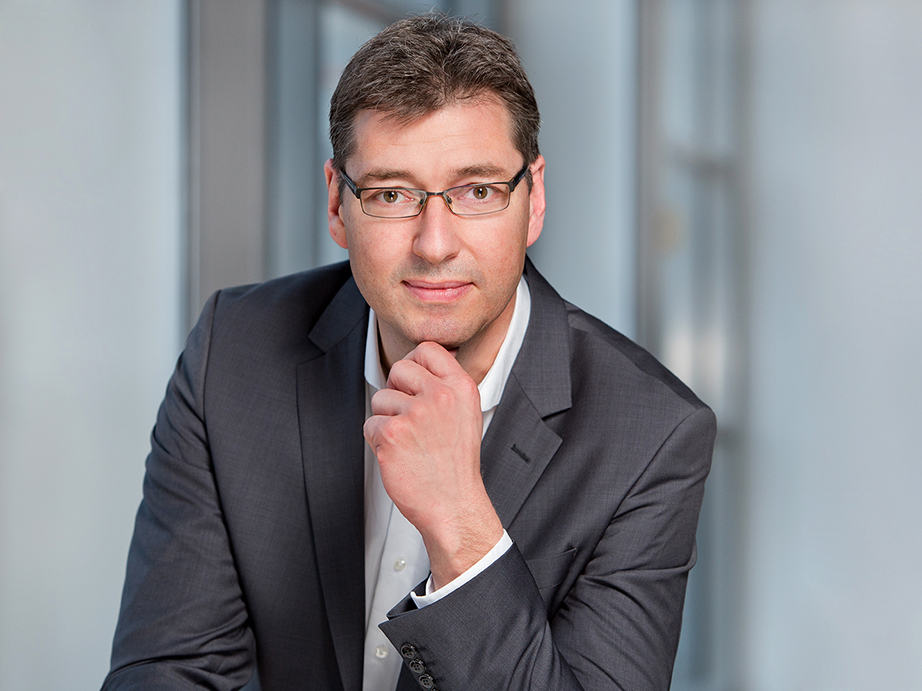... Dr. Thorsten Wack from Fraunhofer UMSICHT
Interview of 14.09.2023

As project manager for modeling and simulation in L-0, what has been achieved so far in the joint project Carbon2Chem® from this perspective?
Thorsten Wack: Mathematical modeling and simulation are elementary tools in system integration, which in turn is a central topic in L-0.
Many questions are answered in the subproject using these tools. These include, for example, the scale-up of the planned plant network and the detailed analysis of the various processes, as well as the determination of optimal operating points, control strategies and operating modes. We have succeeded in linking different levels of consideration and perspectives. Optimization models are used to determine the plant operating schedules for different scenarios, based on which the educt and product flows are then calculated using detailed process engineering models. Finally, these results are then used as a basis for the detailed ecological and economic evaluation of the plant concept under consideration, thus determining the overall systemic optimum.
What were highlights?
Thorsten Wack: Especially when the know-how regarding the subsystems involved is to be protected, the use of so-called black box models becomes necessary in simulations, i.e., models in which the intrinsic mechanisms of action are not transparently coded in the form of mathematical equations. If these models are now combined with further sub models, the correct numerical solution is a major challenge. In L-0, together with our partners, we have succeeded in developing an algorithm that ensures the correct computation of the solution of such so-called hybrid simulation models. This development is my personal highlight, especially because this was also the topic of my PhD thesis, which I was able to defend during the Corona period.
What were the biggest challenges?
Thorsten Wack: From my point of view, the biggest challenge in this major project was to get so many different partners with their respective interests, their specific know-how and compliance requirements under one hat and to commit them to the common goal. This is primarily a question of trust and mutual respect. Both must be earned, this usually takes time, and it is difficult to cast this into contracts. At Carbon2Chem®, this trust and mutual respect for the achievements and contributions of the respective partners in the project have grown steadily over the past 7 years. A big thank you for this goes to the BMBF and the PTJ, both of which have provided us with planning security in the project on the one hand, and on the other hand have always supported us individually in all formal issues, so that we in the consortium were able to concentrate on achieving our goals across all subprojects.
A second important factor was the communities we set up in the first phase, which were methodologically oriented across all subprojects, for example on the topic of modeling and simulation or on the topic of sustainability. This has made a significant contribution to breaking down any barriers between the subprojects and has thus increased permeability enormously.
What next steps are planned?
Thorsten Wack: In my view, the use of carbon dioxide as a raw material for production as a manifestation of carbon cycles will be an important element for the transformation of the process industry. Carbon2Chem® technologies can and should make a decisive contribution here for other carbon sources as well.
In L-0, from the perspective of system integration, we want to create a construction kit that enables the site-dependent analysis, planning and evaluation of a corresponding plant concept beyond the steel mill, also for other so-called point sources such as thermal waste recycling, cement, or lime plants. For us as a partner for applied research and development, this means thinking intensively in terms of recycling paths.
Other crucial issues for the future are social acceptance and aspects of participation. We have taken the first important steps in this direction with the "Coordination and Communication" subproject, and a great example of this is the "Power2Change" traveling exhibition. We want to intensify this together in the consortium and support it from L-0 with suitable tools and methods.
 Fraunhofer Institute for Environmental, Safety and Energy Technology UMSICHT
Fraunhofer Institute for Environmental, Safety and Energy Technology UMSICHT